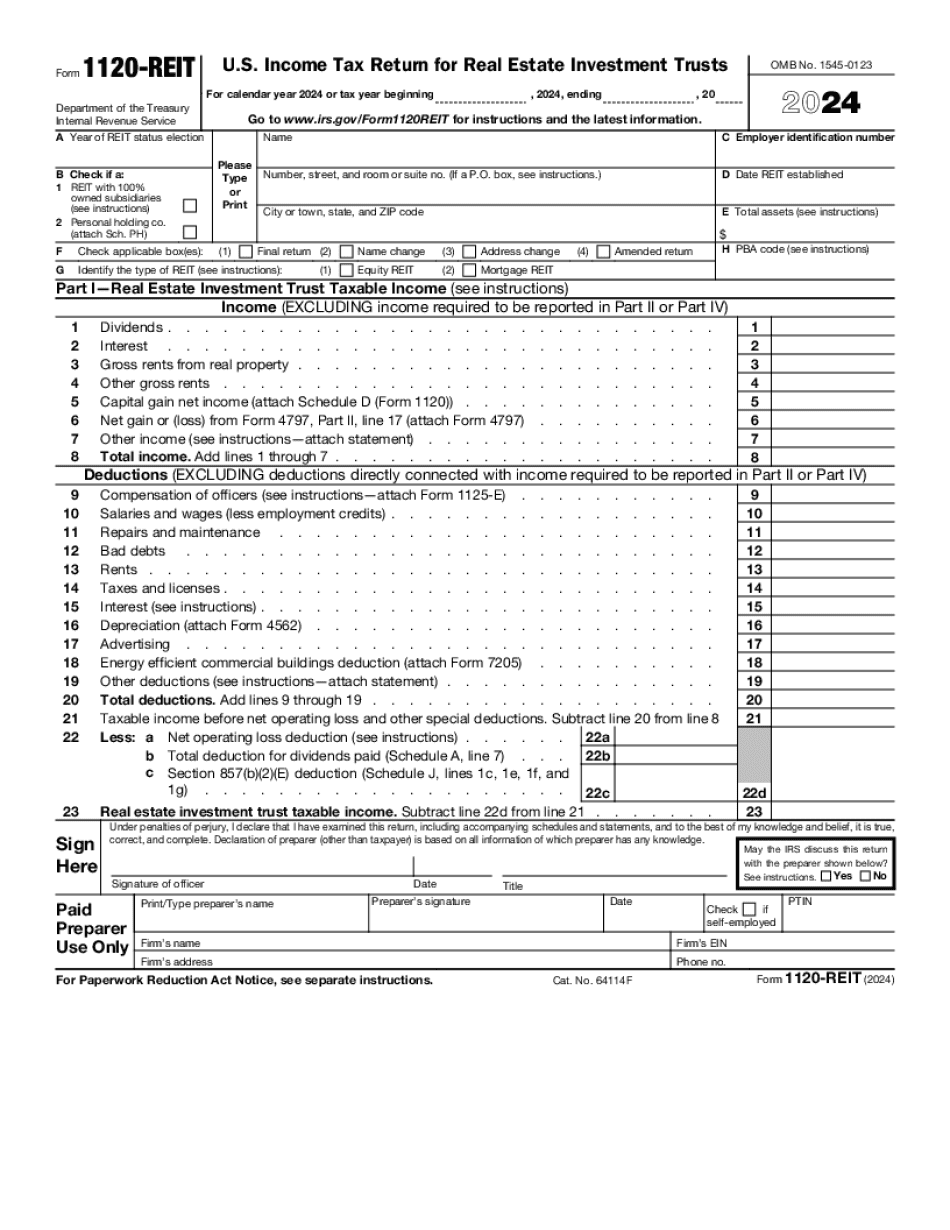Award-winning PDF software





Form 1120-REIT for Salt Lake Utah: What You Should Know
Part 3: Other Real Estate Income & Losses In addition to real estate income from form 1120-REIT, there are other sources of real estate income for form 1120-REITs. Form 13F-A will be used to report the loss, realized or unrealized, from a nonresident investment. When a nonresident's investment in a real estate investment trust is acquired by the nonresident for investment purposes, the nonresident is required to report on form 13F-A the amount of the gain to the extent that he paid the purchase price. The amount reported on form 13F-A is subject to the gross proceeds rule. Any such gain, and any amount realized or unrealized by reason of the amount that is reported on form 13F-A, can be subject to tax at the federal or state level. Part 4: Real Estate Deduction For real estate income from form 1120-REIT, there are no limited or reduced tax rate provisions, which may cause the nonresident gain to be subject to multiple, different tax rates. The IRS has not determined at this time whether such limitations would apply, and thus whether the nonresident must report the nonresident real estate gain on each separate tax return. The amount of the real estate gain on form 1120-REIT is a tax-free return on the property; it is not subject to depreciation or amortization taxes. Real property includes the following: (a) Buildings or structures which are the exclusive possession of the taxpayer, (b) Personal property of a type which is not real property, and (c) The tangible personal property of (i) a partnership or trust, or (ii) a corporation or other entity which is not a partnership or trust. In either case, the tangible personal property which is not real property is not subject to depreciation or amortization rules, unless included in computing the gross income from the property, in which case it is subject to those rules. This is an extension of the rules for the taxable year that began on or before the earliest of (a) the time, and (b) the date the taxpayer acquired the property described in (a). Accordingly, the preceding paragraph applies to property acquired after the calendar year to which such extension applies if the taxpayer acquired it in the year.
Online methods assist you to arrange your doc management and supercharge the productiveness within your workflow. Go along with the short guideline to be able to complete Form 1120-REIT for Salt Lake Utah, keep away from glitches and furnish it inside a timely method:
How to complete a Form 1120-REIT for Salt Lake Utah?
- On the web site along with the sort, click Commence Now and go to your editor.
- Use the clues to complete the suitable fields.
- Include your personal info and contact data.
- Make certainly that you simply enter right knowledge and numbers in ideal fields.
- Carefully verify the articles from the type in addition as grammar and spelling.
- Refer to aid portion for those who have any queries or tackle our Assistance team.
- Put an digital signature on your Form 1120-REIT for Salt Lake Utah aided by the enable of Indicator Instrument.
- Once the form is completed, push Finished.
- Distribute the all set variety by means of e-mail or fax, print it out or help save on the product.
PDF editor allows you to make adjustments with your Form 1120-REIT for Salt Lake Utah from any world-wide-web connected equipment, personalize it in line with your requirements, indication it electronically and distribute in several methods.
